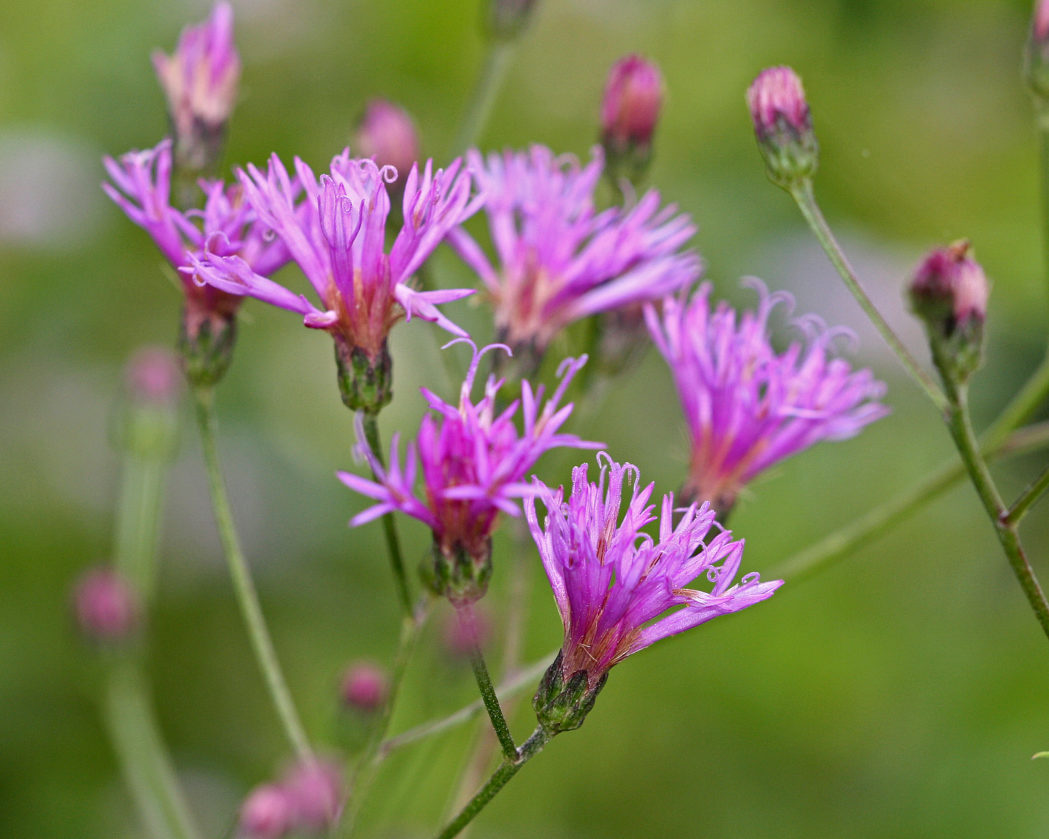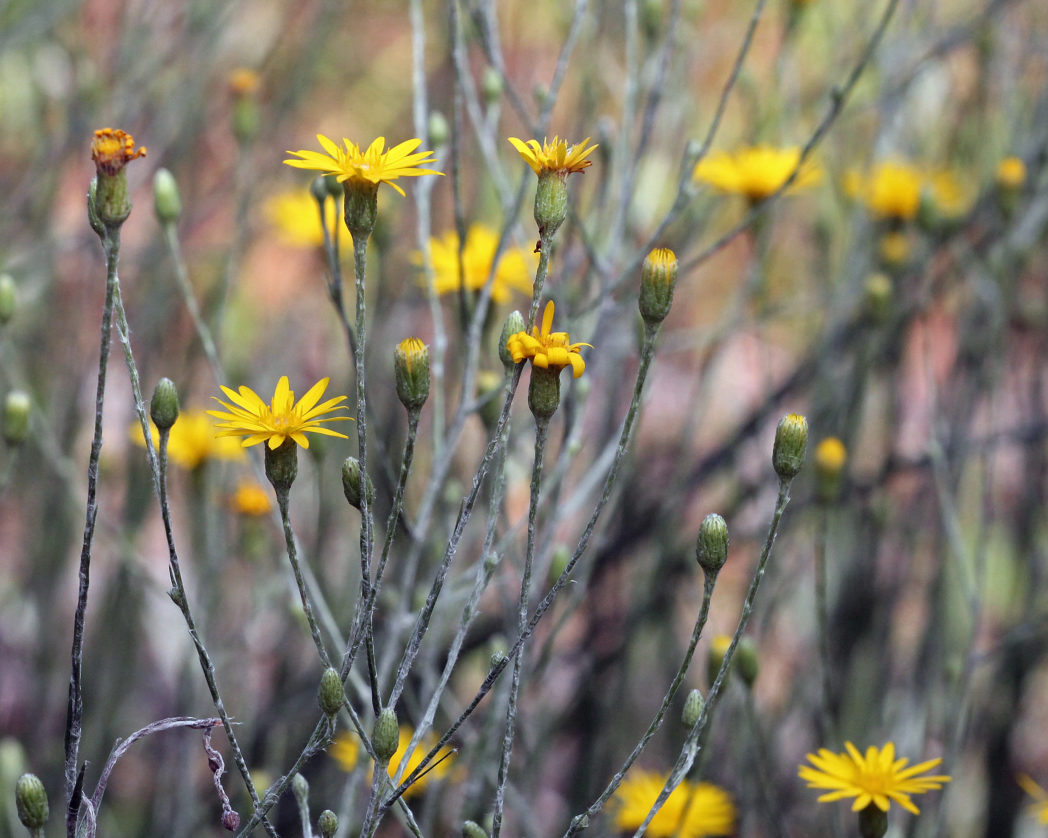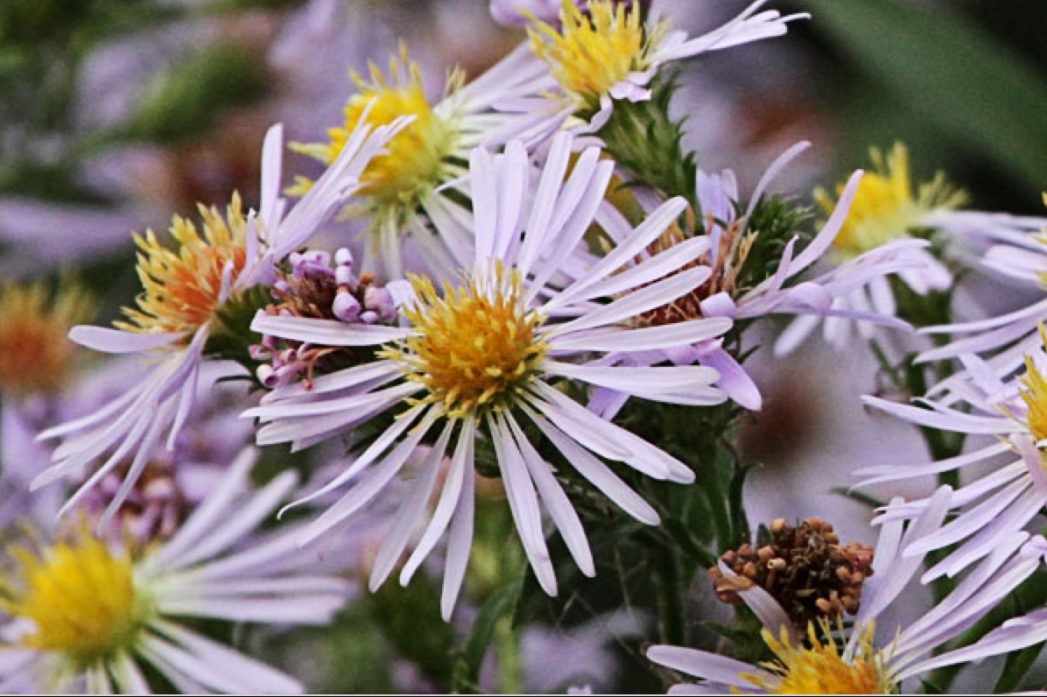Bloom Report: Fall is Aster Time!
Pictured above: Elliott’s aster (Symphyotrichum elliottii). Photo by Ron & Diane Bynum
Northern neighbors have their leaves, but we have a rainbow of wildflowers
by Jeff Norcini
In cooler climates, fall is when “leaf peepers” hit the road to view red-, yellow- and orange-leaved trees. Here in Florida, fall color means wildflowers. And when you hit the road to view fall color here, it’s nearly impossible to not see one of our fall-flowering asters. It is little wonder — the Asteraceae family is one of the largest plant families in the world.
Before I continue, here’s a short FYI about asters: When many of us envision an aster, we think of a daisy-like flower. That flower actually is an assemblage of showy ray florets (petals) that surround a cluster of tiny disc florets that produce the seed. (Many species of the aster family have flowers composed only of disc florets). Because of the composite nature of aster flowers, the original scientific name for this family was Compositae.


Fall-blooming asters with daisy-like flowers include yellow ones such as goldenasters (Chrysopsis spp.), tickseeds (Coreopsis spp.), beggarticks (Bidens spp.), silkgrasses (Pityopsis spp.) and sunflowers (Helianthus spp.), as well as the traditional purple to white asters (Symphyotrichum spp.). Many asters, however, lack petals but still are very attractive, such as a traditional harbinger of fall: the goldenrods (Solidago spp.).
If you have a passion for purple, eye-catching asters composed only of disc florets include the deertongues (Carphephorus spp.), ironweeds (Vernonia spp.) and the ever-popular blazing stars (Liatris spp.). Moreover, Mother Nature was kind enough to give us many purple and yellow asters that flower in the same habitats – a great color combination.
If you prefer other colors, these beauties also lack petals: blue-flowered Mistflower (Conoclinium coelestinum), pink-flowered camphorweeds (Pluchea spp.), the dark-purple (but appears black) Rayless sunflower (Helianthus radula), and white-flowered thoroughworts (Eupatorium spp.). Narrowleaf yellowtops (Flaveria linearis) is also very attractive, even though it has but a single petal.
Where are the best places to view fall asters and other wildflowers? As they say in the real estate business: “location, location, location.” For wildflowers, that means rural locations and, more specifically, open areas without homes or businesses. Open areas, including woodland edges, provide the bright light in which many native wildflowers thrive. Given the extended drought occurring in much of Florida, naturally moist areas probably will be the best areas to view wildflowers. Forested areas and savannas also typically have showy displays of wildflowers the same year they’re burned.
Visit the Florida Wildflower Foundation Web site, www.flawildflowers.org/bloom.php, to see both what’s in bloom and the locations of the state’s prime viewing areas. Also visit www.flawildflowers.org/research.php for wildflower routes.

